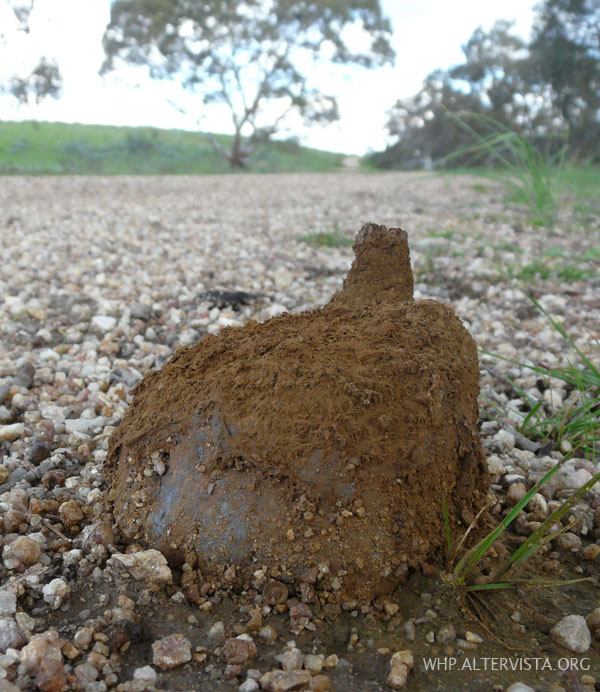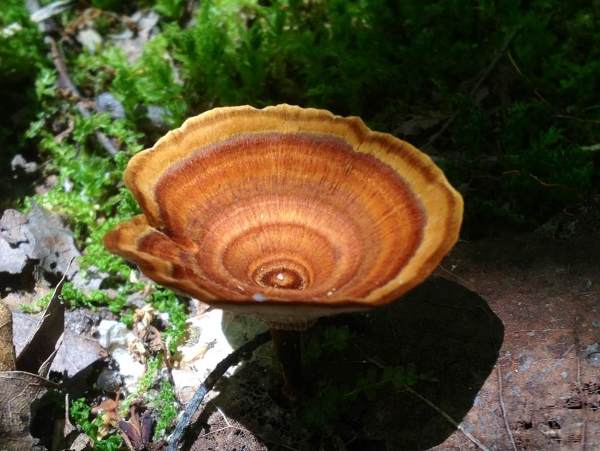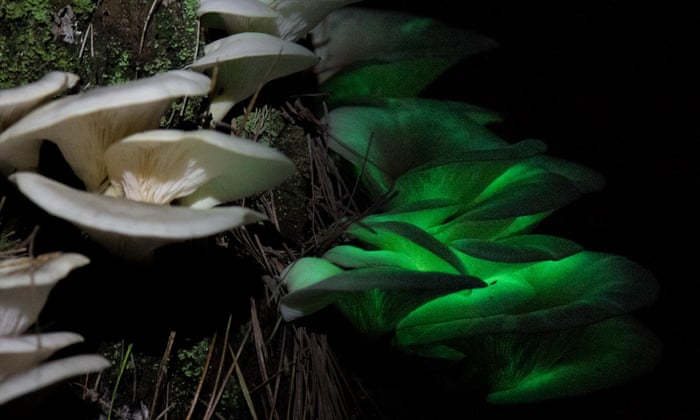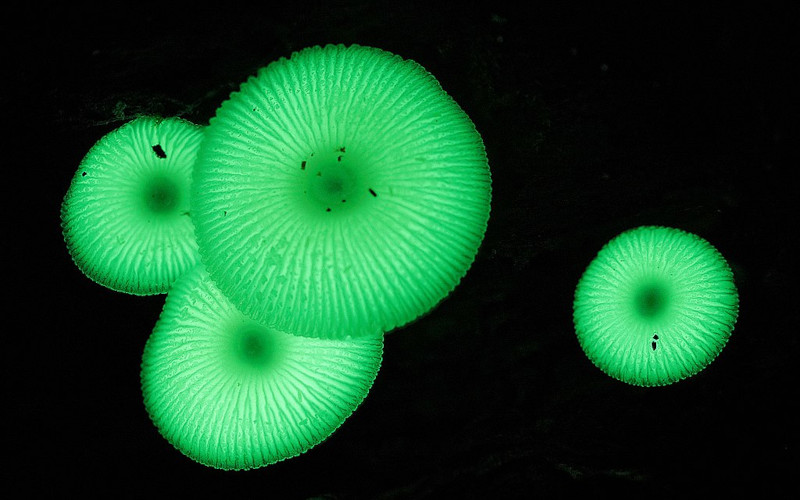/pcg/ Syndeoneia Mycological Report
Written and compiled by Vitubia Mycological Society (VMS)
Professor Tully
Preface
The purpose of this report is to provide a comprehensive guide to the species of fungi, as well as the locations of said fungi within Syndeoneia. This report is written as a non-profit study and has been privately funded by the Vitubia Mycological Society, using information found within their library and is subject to change and amendment as new information is gathered.
This report is written with the assumption that the reader has a basic understanding of the ecology of Syndeoneia and its climate zones, these will be referenced by their corresponding codes:
- BSh - Hot Semi-Arid climate
- As - Tropical savanna climate
- Af - Tropical rain forest climate
The abbreviation 'Sp' will be used in the place of species throughout this report, this will be following the scientific name (in High Lumian) and then the common name afterwards. Pictures will be added when applicable.
Footnote: Funguses is recognised as an accepted plural to Fungi in the dictionary and therefore are interchangeable, but this report will use Fungi exclusively.
Thema Magisseia
The climate of Thema Magisseia is BSh or Hot Semi-Arid Climate, this is unique to the part of the world it is located in and only comprises about 10% of the total land area of Syndeoneia. These areas of land generally have 70% of their total rainfall in the Summer half of the year and their vegetation is comprised of Shrubbery and root plants that require little to no precipitation.
The fungi commonly found in this area are as follows:
- Pisolithus Sp "Horse dung fungus"
- Referred to as dung fungus or similar names, shape reminiscent of horse dung and so dense that they are known to rise up through bitumen roads and beaten paths.
- Fruiting Body: ovoid, gasteroid; 70 x 45 mm; glabrous, dry slightly warty; chalk white with ochraceous brown near base.
- Stipe: rooting stem tough, tapering; 20 x 18 mm; usually buried in its substrate.

- Coltricia Sp "Tiger's Eye"
- Referred to as tiger's eye, mushroom shaped with a flat cap and circular, velvety bands on cap top. Found in sand and dry topsoil, near beaten/dry tracks.
- Cap: irregular but generally centrally depressed to umbilicate; 12 - 35 mm diameter; fibrillose silky, with shining radially arranged fibres; adpressed fibres over most of the cap may be tufted or even upright at the centre; concentrically zoned; rusty to chestnut brown.
- Stipe: more or less central; very irregular, somewhat tapering to base, sometimes with several stipes fused together to form a 'tree like' structure; 20 - 30 x 10 - 8 mm; velutinate; slightly darker than cap.

- Solioccasus polychromus Sp "Desert Truffles"
- Referred to as desert truffles, common types include; Horakiella watarrkana, Mattirolomyces mulpu, Mycoclelandia arenacea, Mycoclelandia bulundari, Reddellomyces westraliensis and Ulurua nonparaphysata. Found commonly in sclerophyll forests (Wallum) on sand dunes.
- Fruiting Body: a hypogenous ovoid to globose truffle with an irregularly lobed surface; 30 - 35 mm in diameter; yellowish orange to reddish orange soon becoming brownish orange; surface appears fibrous/roughened in places.
- Stipe: absent, but there are rhizomorphs visible at the base.

Thema Lagoseia through Thema Alepoyion and Southern Regions
The climate of the zone North of Thema Magisseia and South of Thema Lagoseia is As or Tropical Savanna Climate, this makes up about 60% of the total land area of Syndeoneia. This type of land generally has 300mm of precipitation or less each year and it happens within 2-3 months of the year. The average temperature of these areas usually range from low humidity with scorching temperatures to dry, warm temperatures during colder months.
The fungi commonly found in this area are as follows:
- Boletellus Sp "Rhubarb Bolete"
- Referred to as rhubarb bolete, belonging to the bolete species. Found at the base of tree trunks, usually near moss (tree Sp; Corymbia intermedia).
- Cap: convex; to 55 mm diameter; dry, tomentose,; brown; margin undulating.
- Stipe: clavate; 45 x 15mm; pale brown overlain by a network of darker brown mostly vertical fibrils; exuding resinous droplets at base, possibly due to infection.

- Microporus xanthopus Sp "Yellow-footed Polypore"
- Referred to as yellow-footed polypore, found in forests and woodland on wood including branches and dead logs. Extremely common and found in shaded areas, requires very little water.
- Fruit Body: flat to broadly funnel shaped; 20 - 60 mm diameter; tough and leathery.
- Upper surface: dry, shiny; strongly banded in shades of buff and rich brown with the outer edge of the cap cream to white.
- Stipe: central to slightly eccentric, broadly cylindrical but usually widening towards the base; 10 - 45 x 2 - 8 mm; tough; attached to the substrate by a disc; cream or pale buff, but may be banded like the upper surface and the basal disc is yellow.

- Auricularia aff fibrillifera Sp "Wood Ear/Jelly Ear"
- Referred to as wood ear or jelly ear, found in bushlands/forests on the bark of dead tree trunks or live trees, alongside moss.
- Fruit Body: tough, cartilaginous, gelatinous; mouse-grey to olive-brown; substipitate; up to 100 mm diameter by 1 – 2 mm thick; pileus densely covered with hyaline hairs, some in tufts; hymenium smooth; growing in gregarious or caespitose groups, occasionally solitary.
- Pileus: microscopic made up of densely compacted, gelatinised hyphae with cuticular hairs up to 450 μm long, on average 185 – 200 × 5 – 7 μm, with rounded tips; basidia 45 – 55 × 4 – 5 μm, cylindrical, with 3 transverse septa; spores allantoid, 14 – 16 × 5 – 6 μm.

- Phellinus robustus Sp "Horse Hoof"
- Referred to as horse's hoof, found broadly attached to the standing trunks of trees growing on both living and dead wood. Doesn't share habitat with other trunk bearing fungi, develops a hard cracked and tessellated appearance when mature.
- Fruiting body: a hard bracket which is generally semi-circular and ungulate (like a horse’s hoof); 80 – 100 mm radius; surface woody, rough cracking to form squarish bark-like fragments when mature; margin somewhat blunt.

- Omphalotus nidiformis Sp "Ghost Mushroom"
- Reffered to as the ghost mushroom, found commonly amongst dry forests and plantations, most commonly on Eucalyptus and Pinus tree Sp.
- Cap: convex at first but soon developing a central depression to become funnel shaped; 50 - 150 mm diameter; dry, smooth, cream-coloured with the centre turning brown as it matures; margin often irregular, lobed.
- Stipe: tapering towards base, often eccentric, often with several joined together (caespitose), 50 – 75 × 10 – 35 mm, dry, cream coloured to almost white.

- Mycena chlorophos Sp "Green Pepe"
- Referred to as green pepe, often found alongside hoop pines, Pinus Sp trees both dead and alive. Important distinction that these are not fluorescent but are instead bio-luminescent meaning that they produce their own light.
- Cap: convex to plane, sometimes with slight umbo; 10-25 mm diameter; viscid, radially grooved; white with brownish to smoky grey centre.
- Stipe: cylindrical; 15 - 25 × 2 - 3 mm; white with prominent basal disc.

Thema Loumikon, Thema Amareias and North East Lands
The climate of Thema Loumikon, Thema Amareias and North East Lands is Af tropical rainforest. This climate is defined by its primary characteristics of consistent rainfall all times of the year, and a less than 10 degree average shift between cold and warm months. Most if not all of the fungi previously mentioned above will be found in this area as rainforests are perfectly suited to the growth of fungi.
The fungi commonly found in this area are as follows:
- Microporous Xanthopus Sp "Yellow-footed Polypore"
- Referred to as yellow-footed polypore, characterized by an umbrella shaped fruiting body with distinct rings, found on alive and dead wood alongside moss in moisture rich environments.
- Fruit body: flat to broadly funnel shaped; 20 – 60 mm diameter; tough and leathery.
- Stipe: central to slightly eccentric, broadly cylindrical but usually widening towards the base; 10 – 45 × 2 – 8mm; tough; attached to the substrate by a disc; cream or pale buff, but may be banded like the upper surface and the basal disc is yellow.
- Stereum ostrea Sp "False Turkey-tail"
- Referred to as false turkey-tail, this fungus is most commonly found on alive trees with soft bark, primarily in high moisture environments. Is referred to as a plant pathogen meaning it is a transmittable wood consuming fungi.
- Fruiting body: fan shaped and funnel shaped with outer edge above point of attachment; may be sessile or have a broad or occasionally a narrow attachment to the substrate; projecting up to 100 mm from substrate with a diameter of up to 140 mm; thin, often only 1 - 2 mm thick.
- Flesh: thin and of a tough but elastic consistency, like leather. Not changing colour on bruising.
- Xylaria grammica Sp "Dead man's fingers"
- Referred to as dead man's fingers, this fungus is commonly found in high precipitation climates; growing singly or in pairs attached to logs in wet sclerophyll forest.
- Fruiting body: cylindrical to slightly ellipsoid with a rounded apex; 35 - 60 × 4 - 8 mm; surface granular, tobacco brown, with short, mostly vertical, cracks showing black or grey giving a distinctive patterned effect.
- Stipe: distinct black stipe attaching fruit body to substrate; 10 - 20 × 3 - 5 mm; slightly wider at attachment.
- Ramaria anziana Sp "Coral Fungus"
- Referred to as coral fungus, found growing in a small group under Eucalyptus spp. in wet sclerophyll forest in a thick litter layer. Houses small sand flies and aphids amongst the fingers of the coral.
- Fruiting body: upright, branched, coral; 60 – 90 mm tall by 40 – 80 mm wide; glabrous; pinkish orange to salmon orange, with a white sock at the base; tips rounded or narrowly rounded.
- Stipe: fasciculate; white to pinkish cream; 10 – 20 × 6 – 1 mm; often with aborted branches.
Conclusion
While this report is in no way comprehensive it details most of the common species within Syndeoneia and will help to aid you in identifying these fungi found in the wild. Further reports will be published on the properties of these specific fungi, information is subject to amendment at all times due to the lack of staffing causing experimentation to be particularly slow.
Find below pictures of local macropods consuming fungi within the Af environment